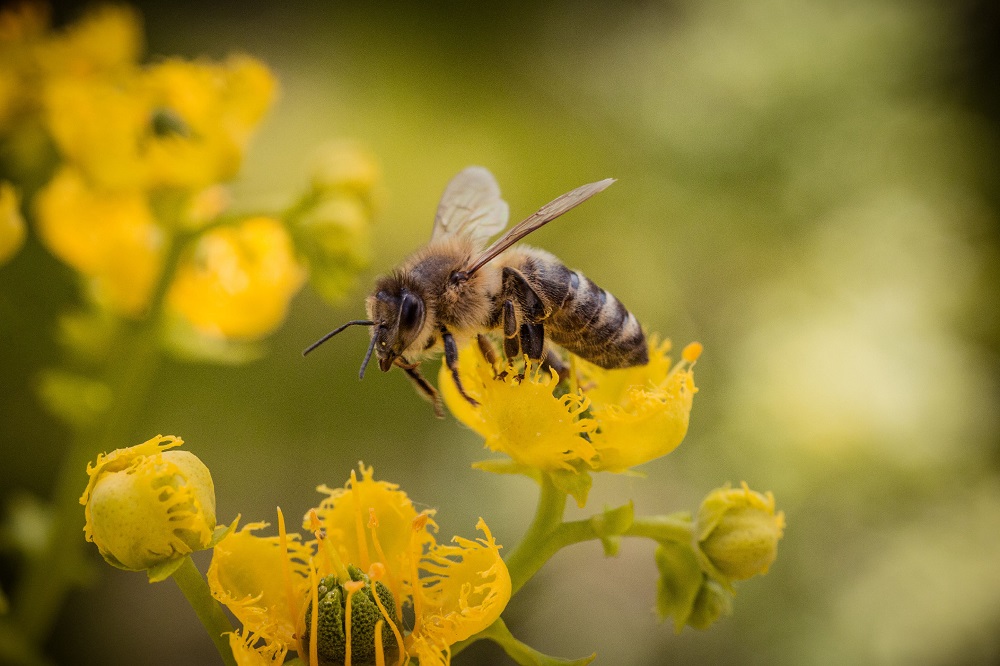Bees that live in mountainous regions could be particularly vulnerable to climate change. – Unsplash pic
NEW YORK, April 30 – Bees that live in mountainous regions could be particularly vulnerable to climate change. A team of scientists has found that milder spring temperatures and early snowmelt in these areas may contribute to a greater abundance of small-bodied bees.
Climate change has real impacts on the development of animal species. To better regulate their internal temperature, many species are forced to adapt their morphology, for example. If some shrink, others change the form of specific body parts such as their tail, their beak or their legs, as is the case with Australian parrots or bats, for example.
A new study, this time focusing on bees, makes a similar observation. According to this research, published in Proceedings of the Royal Society B, these pollinating insects are vulnerable to global warming, especially those living in mountainous regions exposed to early snowmelt and milder spring temperatures.
In total, researchers observed 154 bee species for eight consecutive years in a sub-alpine region of the Rocky Mountains (United States) that is particularly vulnerable to global warming. The goal was to determine how these bees adapt to changing climatic conditions in their habitat.
“We found that comb-building cavity nesters and larger bodied bees declined in relative abundance with increasing temperatures, while smaller, soil-nesting bees increased. Further, bees with narrower diet breadths increased in relative abundance with decreased rainfall,” the study reads.
Decreased snowpack was also associated with a fall in the relative abundance of bees that overwintered as prepupae, whereas bees that overwintered as adults increased in relative abundance, suggesting that overwintering conditions may affect insect body size, as well as the lipid content of their bodies, and overwintering survival.
“Taken together, our results show how climate change may reshape bee pollinator communities, with bees with certain traits increasing in abundance and others declining, potentially leading to novel plant-pollinator interactions and changes in plant reproduction,” the scientists conclude.
According to the study, bumblebees could also be under threat from these changing conditions. These kinds of bees have a lower tolerance to heat, which could make these pollinating insects less numerous. This, according to the researchers, could lead to “cascading effects” on ecosystems. – ETX Studio

